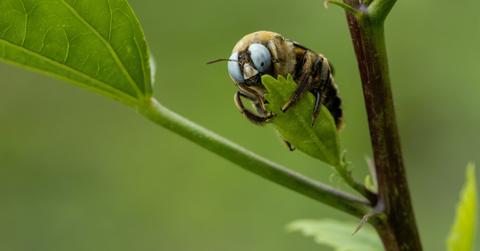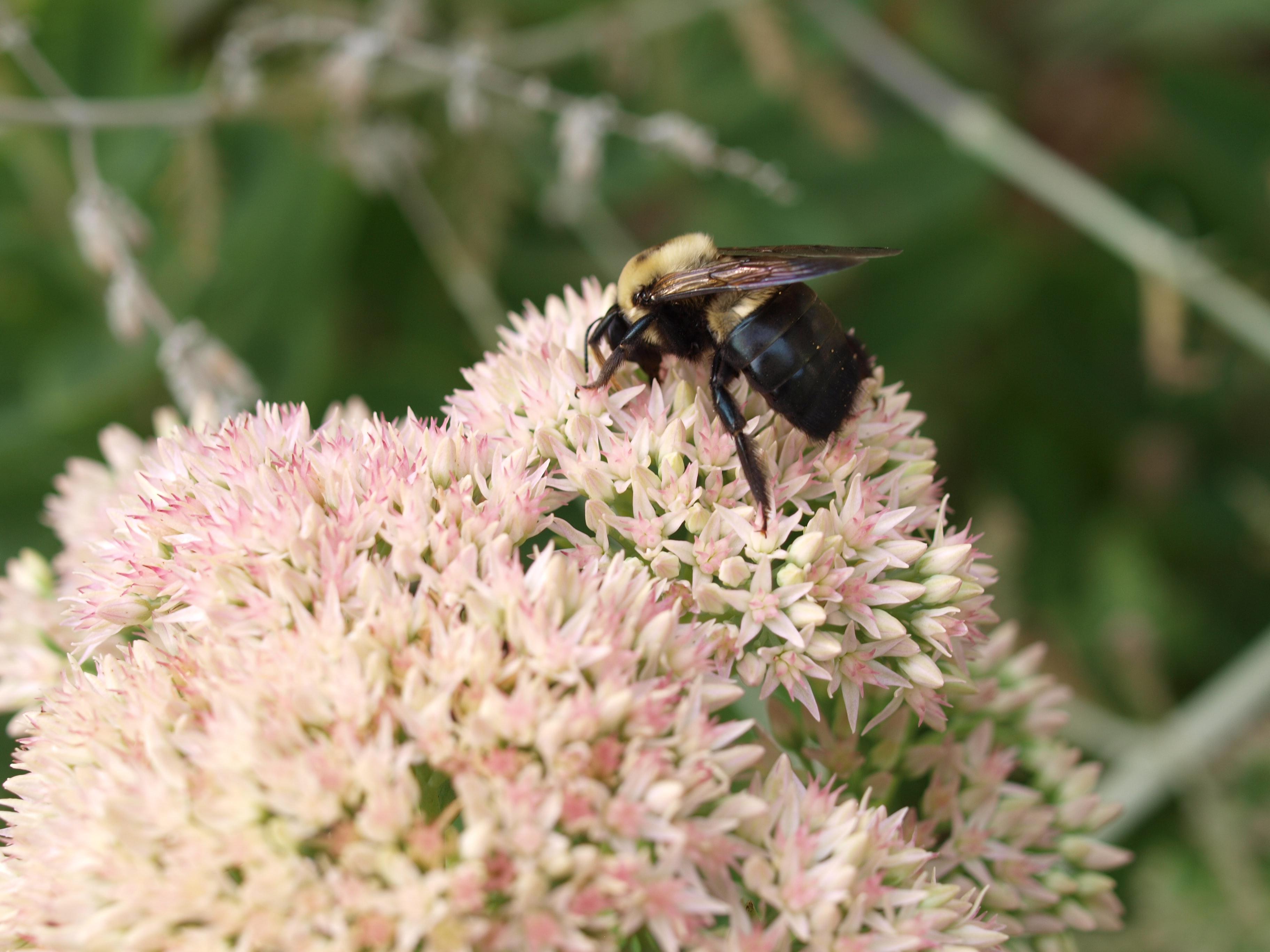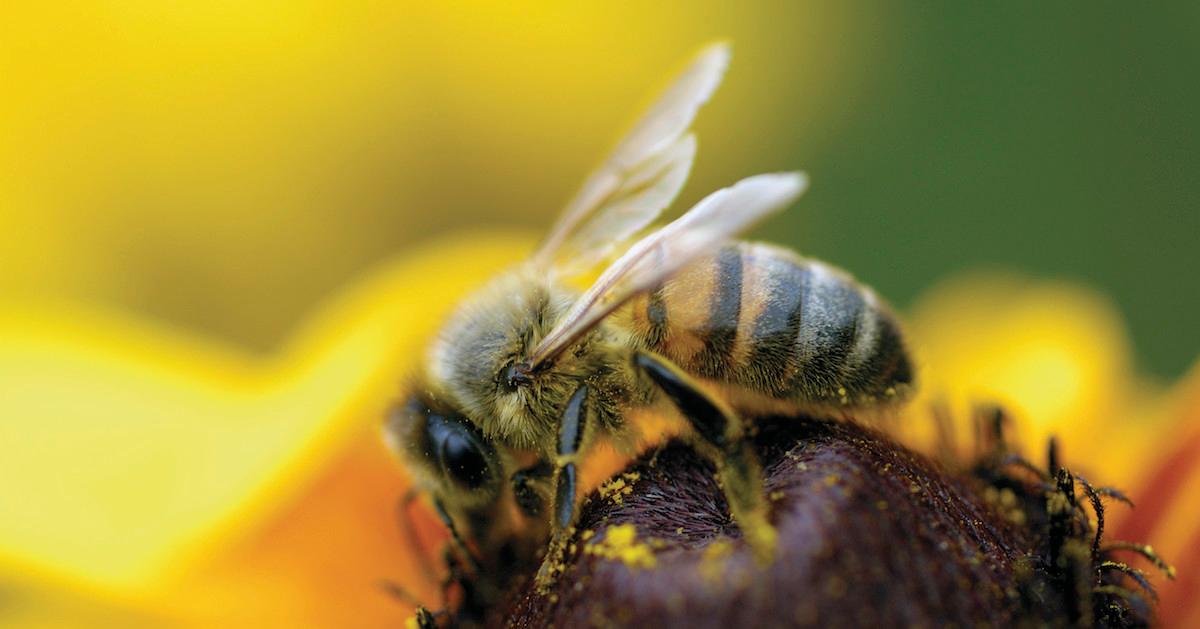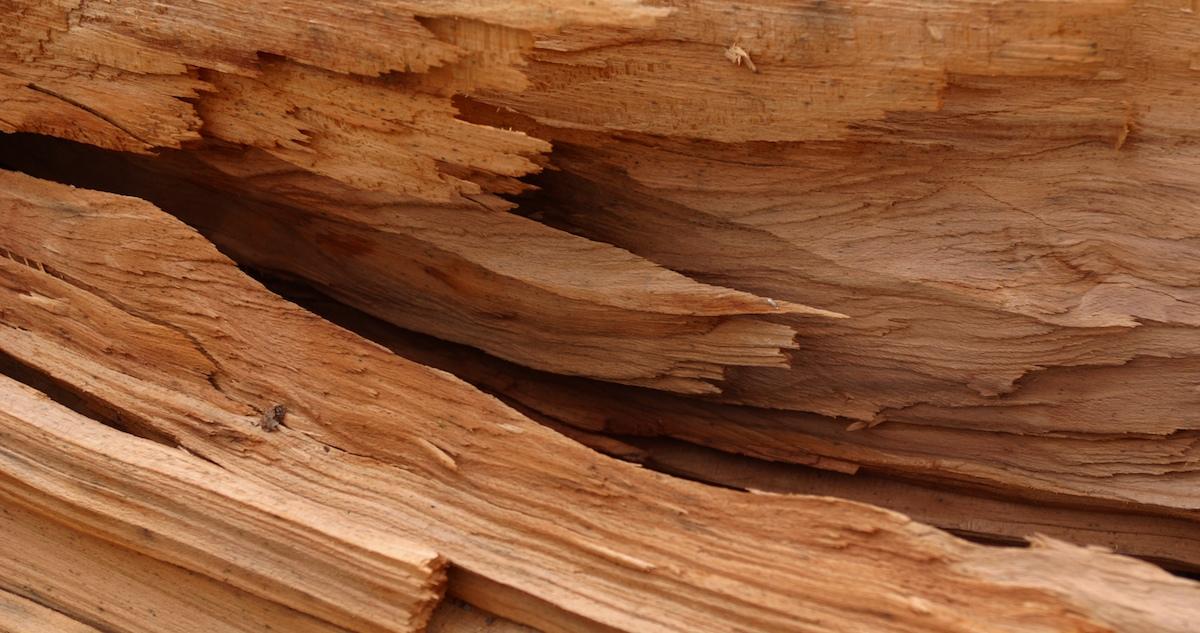How to Get Rid of Carpenter Bees — Naturally
Published June 16 2021, 1:54 p.m. ET

Carpenter bees may not be as aggressive as their honeybee cousins, but that doesn’t mean that we want them buzzing around our homes. As benign as they might seem, carpenter bees can be a destructive force to be reckoned with if your home, outbuildings, or outdoor furniture is made of wood. Sometimes, the only way to stop them from destroying these wooden structures is to find a natural way to get rid of them, and these natural carpenter bee repellents should definitely do the trick!

How are carpenter bees different from honeybees?
To the uninitiated, carpenter bees might look indistinguishable from honeybees, but they do have some traits and behavioral tendencies that let them stand out. Carpenter bees are larger and fuzzier than your average honeybee. Their coloration is more black than yellow, and males have a distinctive mark on their heads, according to Pest & Lawn Solutions.
Carpenter bees do not nest in hives like wasps or honeybees. Instead, they burrow into wood, creating tunnels for the colony to move about in. They prefer nesting outdoors in damp areas but are not above burrowing into wooden door panels, windows, buildings, and fences. Females have a stinger, though they rarely use it, and not one of the 730 species of carpenter bees produces honey.
Natural carpenter bee repellents:

These natural carpenter bee repellents should be enough to keep the bees away from your property and wooden structures, but heavier infestations might require the assistance of an expert.
Cover your bare wood
According to Old World Garden Farms, carpenter bees prefer untreated wood. Thus, one of the best ways to keep them away from your wood surfaces is to stain, treat, or paint them. If you suspect carpenter bees are moving into your old wooden fence, channel your inner Tom Sawyer and whitewash it.
A fresh coat of paint or stain can even scare bees out of a nest if they have just moved in. If you prefer to leave wood looking natural, Old World Garden Farms recommends applying a high-quality clear sealer. This will both weatherproof the wood and make it far less attractive to the burrowing bees that want to call it home.

Suck them out
Bee Serious recommends the hands-on approach when it comes to repelling carpenter bees. The company suggest using a wet-dry vacuum, like a Shop-Vac, to suck the bees out of their hive. Understandably, this method comes with a few provisos.
First, it only works on new, and sparsely populated nests. Second, you need to do it in the evening, when the bees have retired for the night. Finally, understand that even those innocuous bees are going to sting if provoked, and this method is definitely a provocation.
Bee noisy
Carpenter bees prefer quiet nights in rural places. Lots of noise scares the bees, and setting up a radio or speaker near their nest might force them to leave. According to Bee Serious, the vibrations disorient the bees enough to evacuate the whole colony. If the sound is jarring enough, the bees might not even risk returning to the old nest and will look for a new place to settle.
Oils are essential
Like most bees, carpenter bees are sensitive to strong smells. Peppermint, tea tree, lavender, eucalyptus, almond, and lemon oils sprinkled around their nest can make it practically unlivable as far as the bees are concerned. Citrus oil is also very effective as a repellent and can be sprayed into newly drilled holes to essentially smoke the bees out of their nest.
According to Pest & Lawn Solutions, you make your own DIY repellent by simply mixing about a tablespoon of your favorite essential oil into 8 ounces of water, and pour it into a spray bottle. Apply liberally on and around the nest, and watch them scurry. Keep applying every day for a few weeks to make sure they don’t return.